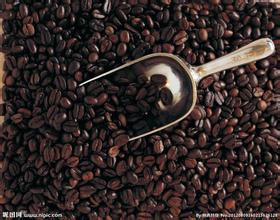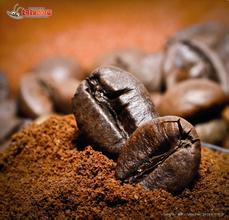Rich and mellow Paradise Bird Manor Coffee Grinding Flavor description method in Papua New Guinea
Papua New Guinea is the second largest country in the South Pacific after Australia in population and area. It consists of New Guinea in the north and Papua in the south. It borders the province of Irian Jaya in Indonesia to the west and faces Australia across the Torres Strait to the south. Papua New Guinea, which belongs to Melanesia, is divided into 21 provinces and capital districts (Port Moresby). The names of the provinces are as follows: central (once translated as "Central"), Northern (once translated as "North"), Chimbu, East New Britain, East Sepik, East Highlands, Enga, Gulf, Madan, Manus, Min Bay, Moroby, New Ireland, North Solomon, South Highlands, West New Britain, West Sepik, West, West Heights, Hela Province, Jiwaka Province Papua New Guinea flags are approximately rectangular The ratio of length to width is 4 ∶ 3. The flag is divided into two equal triangles from the upper left corner to the lower right corner. The upper right is red, with a yellow bird of paradise spreading its wings, and the lower left is black with five white five-pointed stars, one of which is smaller. Red symbolizes plagiarism and bravery; birds of paradise, also known as birds of paradise, are unique to Papua New Guinea, symbolizing national independence, freedom and happiness; black represents that the country's territory is in the "black archipelago". The arrangement of the five stars symbolizes the Southern Cross (one of the small southern constellations with many bright stars), indicating that the country is located in the southern hemisphere, Papua New Guinea is an island country in the western South Pacific and is a member of the Commonwealth. The name of the country consists of Papua and New Guinea. There are many small islands here, about 600 in size. It is adjacent to Indonesia and Australia to the south. It belongs to the Asia-Pacific region, but it is a country in Oceania. Located in the tropical climate, high temperature and rainy. It has rich volcanic soil.
The main crops here are coffee and coconut, and the coffee industry plays an important role in the country's economy. More than 1 million people are directly and indirectly engaged in the industry in this country. Papua New Guinea is rich in natural resources, but its economy is very backward. As one of the less developed countries in the world, many mountain residents still live a self-sufficient life of primitive tribes, only the coastal areas are relatively developed. Many farms reclaim land in the forest, some of which are in the depths of the forest, almost isolated from the rest of the world. So there are not many large-scale coffee plantations in Papua New Guinea, and about 75% of the coffee comes from small local farms. Because the country's overall economic level is backward and does not have good production conditions, the coffee output in Papua New Guinea is not high compared with other coffee-producing countries, but the quality of its coffee will not be inferior to that of large coffee-producing countries.
If Indonesia Mantenin is described as an old man with years of precipitation, then Papua New Guinea is a refreshing and elegant beauty. Not only the bean body is beautiful, the flavor is also beautiful and exquisite. From the map, we can see that Papua New Guinea borders Indonesia, but it does not have the full-bodied, miscellaneous and spicy characteristics of Indonesia's Mantenin. On the contrary, the flavor of Papua New Guinea is more balanced and cleaner. As coffee in this country is widely grown in the highlands of 1300 to 1800 meters above sea level, its unique volcanic soil and abundant rainfall create excellent natural conditions for the growth of coffee; and because the local coffee varieties are introduced from the Blue Mountain Coffee in Jamaica, it belongs to iron card species. Coffee beans are basically washed to make the taste better and cleaner. The innate variety advantage coupled with the excellent growth environment naturally leads to high-quality coffee. Besides. The vast majority of coffee in Papua New Guinea is organic coffee, due to inconvenient transportation, there is no railway transport, there is no sound transport network, the overall economic difficulties, coffee farmers do not have the conditions to buy chemical fertilizer. On the contrary, the deficiency of production and transportation conditions has contributed to this major feature of the country's organic coffee.

Important Notice :
前街咖啡 FrontStreet Coffee has moved to new addredd:
FrontStreet Coffee Address: 315,Donghua East Road,GuangZhou
Tel:020 38364473
- Prev

Introduction to Coffee Fine Coffee from Limon Manor in Nicaragua
Coffee is Nicaragua's main export. According to the president of the Nicaraguan Coffee Farmers' Federation, due to the poor harvest of coffee in Nicaragua's Pacific region, the country's total coffee production in 1998 may be 12% lower than that in 1997. In the coffee year of 1997 and 1998, Nicaragua harvested 1.422 million bags of coffee (each bag of 46kg), which has been producing 10% of coffee in the past 14 years.
- Next

Mellow Coffee Flavor description of Cedar Motad Manor, introduction to the treatment method of grinding degree
Yirgacheffe coffee raw bean is one of the most distinctive coffee in the world, rare and expensive. It is produced in the plateau of Ethiopia's Sidamo province (2000 meters above sea level). It is an outstanding representative of washed coffee in Africa. It has always been famous in the eyes of global coffee connoisseurs. Rare washed high quality Elaraby plus coffee is suitable for all degrees of roasting.
Related
- Does Rose Summer choose Blue, Green or Red? Detailed explanation of Rose Summer Coffee plots and Classification in Panamanian Jade Manor
- What is the difference between the origin, producing area, processing plant, cooperative and manor of coffee beans?
- How fine does the espresso powder fit? how to grind the espresso?
- Sca coffee roasting degree color card coffee roasting degree 8 roasting color values what do you mean?
- The practice of lattes: how to make lattes at home
- Introduction to Indonesian Fine Coffee beans-- Java Coffee producing area of Indonesian Arabica Coffee
- How much will the flavor of light and medium roasted rose summer be expressed? What baking level is rose summer suitable for?
- Introduction to the characteristics of washing, sun-drying or wet-planing coffee commonly used in Mantenin, Indonesia
- Price characteristics of Arabica Coffee Bean Starbucks introduction to Manning Coffee Bean Taste producing area Variety Manor
- What is the authentic Yega flavor? What are the flavor characteristics of the really excellent Yejasuffi coffee beans?

